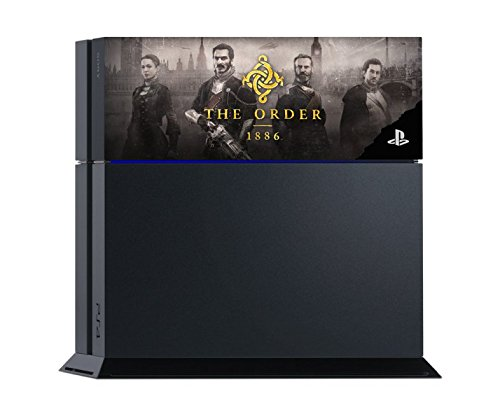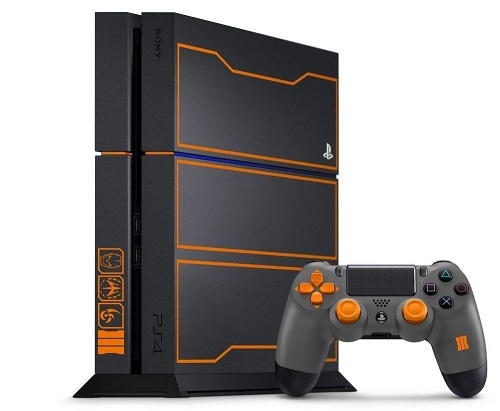PS4 Faceplates could have been Awesome
After the Playstation 4 first debuted to the world, back in 2013, and the hype over its capabilities as a games console started to die down, one of the features that had piqued my interest was the swappable face-plates that could be used to personalise your console. For while special variants of consoles had existed for a few generations now (starting with transparencies and alternate colour-schemes, then exploding proper into an array of full-on branded machines with the Xbox 360), they had never really grabbed my interest, nor had I ever really understood the point to them. As someone who would reliably purchase my primary console within a year or two of launch, I already had a perfectly good machine by the time the variants came out, and the suggestion that I should be spending hundreds of pounds for the sake of a fancy paint job is nothing short of psychosis.
The possibility of cheap customisation was not exactly new, stores had been selling sticker sets for your consoles since the 90s, and when the Ouya premiered a few years prior, it made a big deal over having swappable plates to customise your controllers, but for a big console like the Playstation to open up this possibility, presumably with high-quality artwork, was exciting.
Within three years, the Playstation 4 Pro Slim and Pro models were announced, with their new designs offering no support for either existing plates, nor the possibility of new ones. So, what went wrong? As usual when this question is asked, the answer lies in mismanagement, and good old-fashioned corporate stupidity.
Lack of support was the main issue. Here in Europe, I can’t find any evidence that Sony sold any custom faceplates at all, short of the couple of basic colour options that launched alongside the console itself, because obviously I’m going to shell out a tenner or more in having a third of my console in sky blue now (actually, I did, but we’ll come to that later).
Americans fared somewhat better, as they got somewhere in the range of six decorative plates. Wow. One of the earliest available plates was for The Order 1886, and while I don’t have any solid sales figures for the plate, if we make the generous assumption they sold two plates for every single copy of the game, we can reasonably deduce that it was an utter financial failure.

There were a couple of plates made for games that people actually played, such as Bloodbourne and Little Big Planet 3, but then Sony went back to not caring when they released their final plate, this time for No Man’s Sky, a game they were obviously trying to shift as many copies of as possible before everyone realised it wasn’t the game they had all collectively imagined it would be.
The only place where they even tried to make the faceplates a thing was in Japan, where there were maybe two dozen variants, and even then some of them looked like they were bundled with the console, instead of being separate items you could just buy, thus defeating the point in making them swappable plates instead of just being a branded console.
Now that we have the Pro and Slim, Playstation has ditched the faceplates, and just went back to selling limited edition consoles. And by “went back to”, I do of course mean “simply continued” as, even when faceplates were a thing, they were still selling the likes of the Call of Duty Black Ops 3 PS4.

What could have been done differently
Imagine if Sony had been staffed by competent people, rather than the dysfunctional pack of window-lickers they have instead. How could this feature have flourished?
Well first off, how about releasing some great looking plates, worldwide, for games and franchises that people are actually interested in? Working with 3rd parties to release decorations for some of their big sellers, like GTA V, Minecraft, and EA Sports titles would have been an absolute no-brainer, and sold like hot-cakes. Leveraging some of their classic properties, and releasing designs based on the likes of Parappa the Rapper, or Ape Escape, would have also gone down a treat, and kept the IP in the public eye.
They could have appealed more to hard-core Playstation fans, releasing plates for more niche titles, such as The Last Guardian, or characters such as Toru and Kuro (who apparently did get a limited pressing of 150 plates in China only, so 1 for roughly every 10,000,000 people in the country, good job Sony).
In a perfect world, they may have designed the plates a little differently, with separate front and side segments, so they sit flat, making them much easier to mount and display as part of a collection or feature wall. I can imagine many a gamer happily framing these for their game-room wall, assuming the artwork was of a high-enough quality.
Next, having actually sold plates people actually want, and no doubt become successful for it, it would have made sense to design, if not the Slim, then at least the Pro to work with these plates, so they could continue releasing them for their newest big releases, like God of War or Horizon: Zero Dawn, and classic franchise revivals like Crash Bandicoot.
In this fantastical imaginary future, I would no doubt be typing this sat next to my own collection of plates, watching as they usurped amiibo as the go-to collectible of this generation. Instead, I’m wondering where my solitary blue plate is, the one I had purchased to make my own custom Klonoa plate, before my original PS4 up and died and I packed it in a drawer somewhere, right next to my Ouya.
«Back to "Game Analysis"»
